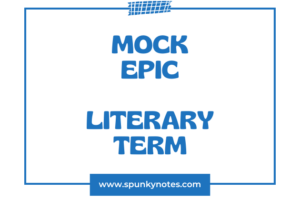
Q. Write a note on Cavalier poets.
Introduction
In the 17th century, a time of much trouble and tension in England, a group of poets known as the Cavalier Poets came to the fore. They supported King Charles I when the country was divided in a big conflict between those loyal to the king and others who opposed him.
Cavalier Poets
The name ‘Cavalier’ comes from the Spanish word ‘caballero,’ meaning horseman or knight. It was initially used in a derogatory way to describe the royalists, but over time, it lost its negative connotation.
The Cavalier Poets, including prominent figures like Robert Herrick and Richard Lovelace, were noted for their optimistic outlook on life. They focused on love, beauty, and enjoying the simpler pleasures in life.
Their poetry acts like a bridge in English literature, connecting the writings of the 16th century with those of the 18th century, showing a love for life even when things were tough.
Characteristics Cavalier Poets
The Cavalier Poets stood out in the 17th century with their fresh and lively approach to poetry. Following are the characteristics of Cavelier Poetry.
1- Simple Language
The Cavalier Poets chose to use simple language in their poems. They believed poetry should be easily understood by many, not just by a few learned people.
This writing style made their poetry accessible and enjoyable to a broader audience. For instance, in Robert Herrick’s poem “To Daffodils,” the straightforward language paints a beautiful picture of the flowers.
2- Joyful Themes
The themes of these poets are filled with joy and happiness. Their poems frequently touched upon topics such as love, beauty, and the simple pleasures in life. They liked to write about happy moments, parties, and the enjoyment found in the present time.
An excellent example is Richard Lovelace’s “To Lucasta, Going to the Wars,” where he shows love in a very joyful and optimistic manner. Their poetry often brings a smile to the reader’s face as they transport them to a world filled with joy and love.
3- Loyalty to the King
A unique feature of Cavalier Poets was their intense loyalty to King Charles I. This loyalty was not just political but also deeply personal. Their poems often expressed admiration for the king and a desire for his rule to continue.
In poems like “To Althea, From Prison,” Lovelace eloquently expresses this loyalty and admiration. This trait made them distinct when England was divided in its support for the monarchy.
4- Carpe Diem Philosophy
One of the well-loved themes in their poetry was the “Carpe Diem” philosophy, which means “seize the day” in Latin. This philosophy encouraged people to make the most of the present moment without worrying too much about the future.
Herrick’s “To the Virgins, to Make Much of Time” is a perfect example. He urged young people to enjoy their youth while it lasts by embracing love and happiness in their daily lives.
5- Casual Style
The Cavalier Poets had a casual style of writing, which was in contrast to the more serious and complex writing styles of their time.
They did not indulge in philosophical thoughts but kept their poetry lively. This writing style was like having a friendly chat, making their readers feel more connected and engaged.
6- Personal Touch
Their poems often contained a personal touch, where they would speak directly to their readers or to the subjects of their poems. This direct approach made their poetry feel more intimate and heartfelt, allowing readers to connect closely to the poets and their emotions.
7- Flexible Structure
When it came to structure, they were quite flexible. They did not stick rigidly to complex poetic forms. Instead, they preferred to keep a flowing and natural rhythm in their poems, making them feel more spontaneous and less constrained.
8- Appreciation for Nature
The Cavalier Poets had a deep appreciation for nature. Their poems often depicted the beauty of the natural world in a lively manner.
For instance, in poems like “The Blossom” by Herrick, the portrayal of nature is vivid and delightful. They encouraged people to appreciate the beauty surrounding them, promoting a sense of peace and happiness.
Famous Works and Poets
During the 17th century, the Cavalier Poets graced the English literary scene with their charming and uplifting works.
1- Robert Herrick (1591-1674)
Robert Herrick was a prominent figure among the Cavalier Poets. His collection “Hesperides” is filled with over a thousand poems focusing on life’s joyous aspects.
His poem “To the Virgins, to Make Much of Time” is especially famous. It encourages young people to enjoy their youth before it fades away.
Another noteworthy poem by him is “To Daffodils,” where he appreciates the beauty of these flowers in a simple yet touching manner.
2- Richard Lovelace (1617-1657)
Richard Lovelace was another star in this group. His poetic contributions are well-recognized, particularly “To Lucasta, Going to the Wars,” which portrays a soldier’s conversation with his beloved as he leaves for war. It is a heartfelt piece that speaks of love and duty.
Another famous work, “To Althea, From Prison,” discusses finding freedom even in captivity, reflecting on his experiences during the English Civil War.
3- Sir John Suckling (1609-1642)
Sir John Suckling was known for his witty and playful style. His poem “Ballad Upon a Wedding” celebrates love and marriage. It depicts the joy and festivity surrounding a wedding in a lighthearted and jovial tone. His works often had humor, making them delightful to read.
5- Thomas Carew (1595-1640)
Thomas Carew is recognized for his sensual and romantic poetry. His poem “A Rapture” is a bold expression of love and desire, written in a way that is both tender and passionate. Carew had the knack of portraying deep emotions in a straightforward yet touching manner.
Cavalier poets were influenced by humanism, focusing on daily life and human nature in their relaxed and melodic verses.
In conclusion, Cavalier poets flourished in the 17th century. They often wrote about enjoying life and the beauty of the present moment.
Their poems are easy to read and have a cheerful and musical tone. Famous poets from this group include Robert Herrick and Richard Lovelace. Their writing style is more relaxed than metaphysical poets’ deep and complex styles.

